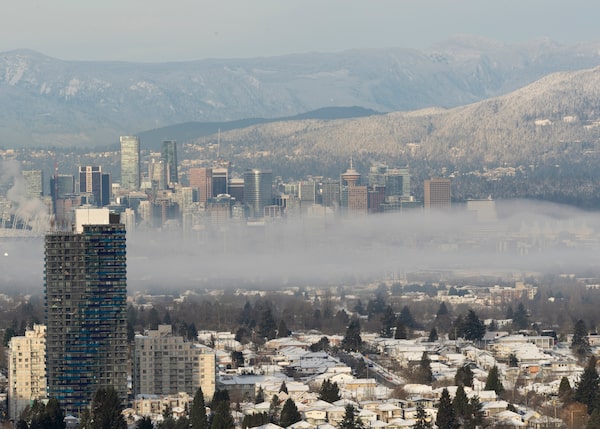
Theft from cars in Vancouver used to be heavily concentrated downtown. But as office workers stayed home during the pandemic and there weren’t as many cars in the central business district, theft activity shifted to residential areas that have a lot of cars on the street.Andrew Chin/Getty Images
Although crime plummeted in Vancouver in the early weeks of the pandemic, there has since been a noticeable uptick in violent crimes in the city’s poorer areas and a smaller but noticeable increase in thefts from cars in wealthier ones, says a new study from B.C.’s Simon Fraser University.
The increase in assaults, robberies and weapons offences in areas such as downtown Vancouver, Strathcona and Mount Pleasant is a typical pattern in cities after a natural disaster or exceptional event, says SFU criminology professor Martin Andresen.
“The people who live in these areas, their work was more vulnerable to the shuttering of the economy. They had more job losses,” he said.
That stress can push people into more aggressive behaviour. And it can lead, not necessarily to them turning to crime to make up for lost money, he said, but being more willing to purchase items from the underground economy, which creates more demand for stolen items.
“There are some increases now as a lot of the socioeconomic impacts are really manifesting themselves,” said Prof. Andresen.
The SFU study is released after statements from the Vancouver Police Department over the past year detailing increases in crimes such as random attacks on people in the street to more vandalism, road rage and general mayhem.
Mayor Kennedy Stewart has been criticized by a few resident groups and commentators for not doing enough about the situation. On Wednesday, the mayor defended himself during a regular media briefing, as he was repeatedly asked about his response to various recent incidents.
Mr. Stewart said he believes the police are doing everything they can to tackle the changing crime patterns.
“I have full confidence that the Vancouver police are doing an excellent job. My job is to make sure the police are adequately resourced. We did that,” he said Wednesday.
“I do think Vancouver is one of the safest cities in the world,” he added, noting he personally feels safe walking around the downtown peninsula, where he lives.
Prof. Andresen said he and his co-author, Wilfrid Laurier University professor Tarah Hodgkinson, did not find evidence of a complete breakdown in social order, as some have suggested, but more of a redistribution of crime patterns.
Theft from cars used to be heavily concentrated downtown. But, as office workers stayed home during the pandemic and there weren’t as many cars in the central business district, theft activity shifted to residential areas that have a lot of cars on the street. Those areas include Kerrisdale, Oakridge and Dunbar. The entire west side had an increase of thefts of cars, while most of the west side except for Shaughnessy had an increase in thefts of property from inside vehicles. Killarney, a suburban-style neighbourhood in the southeast, saw an increase in general theft.
Crimes such as arson, assault and robbery increased in more central-city neighbourhoods, but not dramatically. Robbery increased, but only by about two incidents a month, to 50 from 48. Assaults rose to 370 from 345, while mischief charges rose to 423 from 420.
The biggest change was in weapons-related incidents, to 90 a month from 64.
RCMP statistics from Surrey, which was not part of the study, show a similar pattern. Crime comparisons between the last three months of 2019 and the last three months of 2020, when there were strong pandemic restrictions in place, showed that crime reports plunged for all categories. By the third quarter of 2021, some categories had risen noticeably, including arson, business break-and-enters, shoplifting, and causing a disturbance.
The SFU study notes that other studies of crime changes have noted similar patterns, as crime shifts to where there is more opportunity and more need. In Miami, for example, violent crime dropped noticeably in the first months of the pandemic, but a closer look at statistics showed there were clusters of increased violence in some African-American communities.
“Crime will change depending on the changes in the underlying opportunity structures resulting from the exceptional event,” the paper noted. “In other words, some crime types may increase and others decrease depending on shifts in suitable targets, motivated offenders and capable guardians.”
We have a weekly Western Canada newsletter written by our B.C. and Alberta bureau chiefs, providing a comprehensive package of the news you need to know about the region and its place in the issues facing Canada. Sign up today.
 Frances Bula
Frances Bula